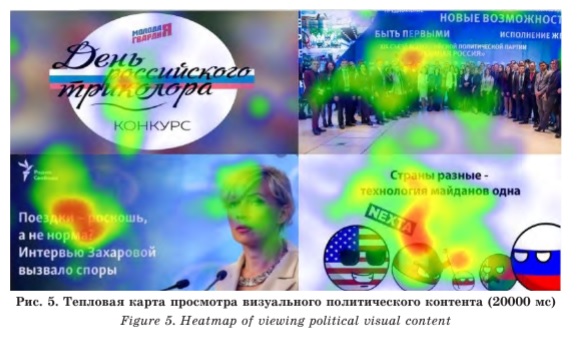
The article examines the peculiarities of the young people perception of political content in social networks. The use of an objective neurophysiological oculography method for the study of visual attention has been proposed. The empirical basis of the study was the analysis of 1500 social network posts of political orientation, to which the tagging of the visual part of the message was applied and basic behavioral statistics were collected, including indicators of communicability, attractiveness and virality. This allowed to conduct a primary classification of political content and form sets of stimulating material for conducting neurophysiological research. The research experiment consisted of consecutive displaying collages of various types of political content (memes, photographs of political leaders, photographs of political events and posters) and simultaneously recording the participants eye movement behavior using a web tracker. The obtained quantitative data was used to determine the trajectory of studying the stimulus material, as well as to assess visual attention when perceiving various types of political content. The study of the stimulus material begins with viewing the image in the upper left corner (0°-45°), then moves to the lower left corner (135°-180°), regardless of the type of content. It was discovered that the average duration of fixations for different types of political content differs significantly (H=8.201, df=3, p=0.042). The most attractive are memes and photographs of political leaders, the least attractive – posters. The first fixations are caused, as a rule, by the pattern of viewing visual information. An increase in the duration of perception of a stimulus leads to a redistribution of the duration of fixations to the images most interesting for the participants in the experiment. It was revealed that the average duration of fixations on the content entails its memorability (images), as indicated by the Pearson correlation coefficient (r=0.564, p=0.023). The obtained data on the visual perception of various types of political content allows to adjust and increase the effectiveness of the communication strategy for promoting certain accounts in social networks by actors of political power.